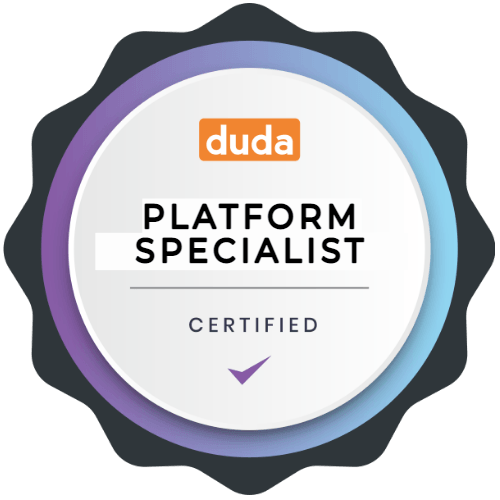Needing help with online marketing?
7 Most Effective SEO Strategies for 2024
Share this post
Before we dive into the SEO strategies, let's understand what SEO is and what SEO strategies are.
SEO stands for search engine optimisation. It's the practice of making your content or website appear as high as possible on search engines, ideally at the top.
Just like any goal, getting your website to rank high on search engines needs effective strategies.
These strategies, which work for most websites, are called SEO strategies.
Search engines show ads to users, so they want to provide relevant information to us. The relevance of your content depends on you. If your content is valuable to your audience, search engines will favour you. If not, getting organic traffic will be tough without digital marketing help.
But don’t worry. We can't cover all
SEO strategies here, but we will discuss the important ones for 2024.
7 Tips On How To Build An Effective SEO Strategy To Rank A Website
When it comes to SEO, there's no single rule that works for every website.
In the past, there were tricks to make websites rank higher, but that’s no longer the case.
Now, in 2024, ranking higher takes more effort and consistency.
1. Keyword Research
To rank on search engines, you need to create content and build credibility.
The first step to creating the right content is keyword research.
You need to work with an SEO company to find three types of keywords:
- Short tail - 1-2 keywords that are highly competitive with a high search volume.
- Long tail - More than 4 words, not searched much on Google, and have low search volumes.
- Medium tail - 3-4 words that are moderately competitive.
A digital marketing agency can help you learn and use keyword strategies better.
Short tail keywords are words or phrases that many users search for. For example, “SEO” could mean SEO website design, SEO full-form, or SEO strategies. It’s hard to rank for short-tail keywords without knowing what people want.
Medium and long-tail keywords are more specific to what users are searching for. They can also show up when short-tail keywords are searched.
Even though long-tail keywords are easier to rank for, don’t ignore short-tail keywords.
Pick 10-12 well-known words or phrases for your industry and audience. Research these keywords using tools like Spyfu and Ahrefs.
These tools show the monthly search volume, competitiveness, and related search results. Use the researched short-tail keywords for your first few main posts.
Main topics are called pillar posts. Other topics branch out from them.
Once you have your pillar posts, use long and medium-tail keywords to create content around them.
2. Content Quality and Structure
Think of Google as a person. Don’t create content by just stuffing keywords and cramming information. Make it clear to search engines what you are talking about.
Keyword stuffing worked in the past. Some websites even put keywords in the stylesheet to trick Google.
But this stopped working after the Penguin update.
Now, you don’t need to stuff keywords in your content. Just include relevant keywords (1%-2%) naturally, and make sure your content offers something new and interesting.
Blogs are great for attracting customers to your website. But the content structure must follow SEO practices.
SEO practices depend on how we read articles as humans and how search engine crawlers index them.
A key element is having metadata in your content. Meta-title and meta-description are parts of metadata. The “meta” stands for “most effective tactics available”.
Metadata tells search engines to show a specific title and description on the search results page instead of a random part of the content.
When creating content, don’t make it too complicated. Keep it easy to understand.
Our brains can get overwhelmed by long paragraphs. Don’t make them too lengthy. A big paragraph on a large screen can feel like a mountain on smaller screens.
3. Mobile Optimisation
The number of people using only their mobile devices to browse the internet has been increasing rapidly.
Search engines like Google take this into account when ranking websites.
If your website isn’t optimised for mobile with responsive web design, your chances of ranking high on search results are low. Talk to a digital marketing specialist to create a mobile-friendly website.
Mobile optimisation also means you should compress your images before uploading them. The loading speed and user experience (UX) design of your site are also important for SEO. Because of hardware and network limitations, page speed is more crucial for mobile users than desktop users.
Since the screen is smaller, you need to shorten the meta-title and meta-description to match the interests of mobile users and SEO strategies.
4. Consider Link-Building
Links from and to your website help your SEO a lot. This doesn't mean content isn't important, but links make your content more trustworthy to search engines.
Links to your site from other sites, links within your site, and links from your site to other high-authority sites increase your chances of ranking higher.
Guest blogging is a great way to get other high-authority websites to link to your content. You can ask these sites if you can write content for their blog and include a link or two.
Links to other high-authority websites also boost your content’s authority. When you link to well-known sites, you gain an edge over your competitors.
5. Competitive Analysis
To understand the latest SEO strategies, follow your competitors and see what they are doing right.
Depending on the size of the website, your competitors might have access to organic data that helps them create effective SEO strategies.
By analyzing your competitors, you can see which pages and keywords they rank for. Since rankings change, you can find out what new strategies they have used on their top pages.
You should also analyze your competitors' social media profiles. A sudden increase in their social media activity, changes in content structure, and audience engagement can indicate the SEO strategies they are using.
6. User Experience (UX)
Search engines want to show websites that users like. If your website is hard to use, people will leave quickly, and search engines will notice.
Make sure your website is easy to use. This means having clear menus, fast loading times, and helpful information.
When people stay on your site longer and interact with it, search engines will see it as valuable and rank it higher.
7. Conversion Rate Optimization (CRO)
Getting visitors to your site is only part of the job. You also need them to take action, like signing up for a newsletter or making a purchase. This is where Conversion Rate Optimization (CRO) comes in.
CRO focuses on improving your site to boost the percentage of visitors who convert into customers or take the desired action.
Simple things like clear call-to-action buttons, easy-to-fill forms, and persuasive copy can make a big difference.
By testing different elements on your site and seeing what works best, you can improve your conversion rates and get more value from your traffic.
The Bottom Line On Creating An Effective SEO Strategy
Hopefully, you can use these SEO strategies to get more traffic to your website. Quality content should always be your top priority. To support this content, you need to do keyword research and competitive analysis.
For even better SEO results, focus on improving your website experience and link-building strategies.
About Social Space
Hey there, I'm Robert Tickner!
I’m an online visibility consultant who helps local small businesses get noticed on Google search, guiding them on their digital journey for growth. I build websites with structured web design practices through SEO services that get noticed on Google's search algorithms, write the occasional blog, and boost Google Business Profile listings to improve overall traffic that helps convert more potential clients to your website.
I'm determined to grow my business.
My only question, is it time to boost yours?







